Starchy vegetables and nonstarchy vegetables there are two main kinds of vegetables. starchy and non-starchy. They vary in terms of nutritious value and carbohydrate content.
Starchy vegetables are a great energy source since they are richer in calories and carbohydrates. These veggies include potatoes, corn, peas, and winter squash. They are frequently a mainstay in diets because of their capacity to prolong feelings of fullness
.🌟 TOMO Bottle: Unlock Elegance and Savings with the TOMOGLAMOUR30 discount code! Enjoy 30% off your TOMO Bottle purchase today. 💧 Experience hydration reimagined with our glamorous water bottles. Shop now! 🛍️ 

On the other hand, non-starchy veggies are high in fiber, vitamins, and minerals but low in calories and carbs. Examples of these vegetables are leafy greens, broccoli, cauliflower, peppers, and cucumbers. These veggies provide a variety of nutrients and aid in maintaining a healthy weight, making them indispensable for a balanced diet. Both kinds are essential to a balanced diet and promote general health and well-being.
List of Starchy Vegetables
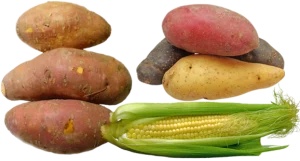
Across the world, a wide variety of starchy vegetables are eaten, including:
- Corn
- White potatoes
- Sweet potatoes
- Taro
- Verdant peas
- Lima beans
- Squash in winter
- Raw Turnips
- Cassava
- Plantain
List of NonStarchy Vegetables
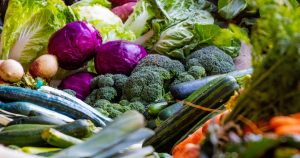
Non-starchy vegetable examples are as follows:
- Purple cabbage
- Eggplant
- Arugula
- Asparagus
- Brussels sprouts
- Celery
- Jicama
- Swiss chard
- Kohlrabi
- Broccoli
- Chili peppers
The Benefits of Both Starchy and Non-Starchy Veggies
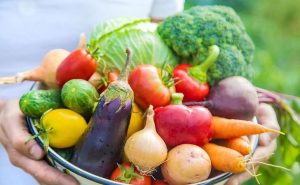
Vegetables of both kinds are rich in nutrients. A range of veggies should be a part of your diet. The vegetables’ hue indicates the nutrients and antioxidants they contain.
You can reduce your chances of cancer and heart disease by eating a diet rich in antioxidants. To ensure that you receive a wide variety of antioxidants, you should aim to obtain a wide range of hues, such as:
Yellow and Orange Colors Vegetables
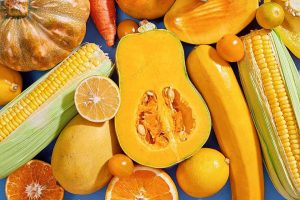
Sweet potatoes, pumpkins, and carrots are some examples of vegetables that have these hues. They contain antioxidants and nutrients that can strengthen your bones, strengthen your immune system, prevent heart disease, and promote eye health.
Vegetables with Blue and Purple Colors
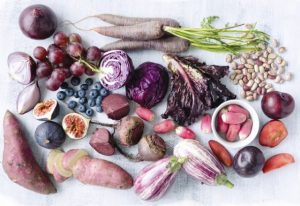
These colorful veggies, such as purple cabbage and eggplant, are rich in antioxidants that help fend off heart disease, cancer, and stroke. They are also necessary for memory and healthy aging. They can also aid with digestion and urinary tract health.
Vegetables in White Color

White veggies, like cauliflower and onions, support healthy immune system function. They include nutrients that can help shield you against certain cancers. Additionally, they can lower elevated blood pressure and harmful cholesterol.
Vegetables with a Red Color

Antioxidants found in red veggies like tomatoes and beets reduce the risk of high blood pressure, high cholesterol, and clogged arteries. The red chemicals may potentially improve brain function and offer cancer prevention.
The Vegetables of’ Green Color
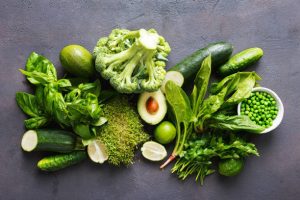
Two kinds of green vegetables that can help shield your eyes from macular degeneration are broccoli and spinach. Additionally, eating green veggies lowers your risk of cholesterol and cancer. These antioxidants support healthy digestion and a stronger immune system. Getting enough green vegetables is especially important for pregnant women because they contain folate, which helps prevent congenital diseases (arising at birth). Upgrade Your Wardrobe With Ryderwear’s Icon Collection. Shop Now!
How to Increase Your Intake of Starchy Foods
You can include more starchy foods in your diet by following these suggestions.
During Lunch and Dinner
- For lunch, consider having a baked potato with the skin on for even more fiber.
- Try preparing oven-baked potato wedges instead of chips or fried potatoes.
- Eat less sauce and more rice or pasta, but don’t forget to eat your veggies.
- Try wholemeal, granary, or seeded bread. Selecting wholegrain options will also result in a higher intake of dietary fiber.
- Try making rice salad with brown rice; it’s delicious. Discover The Latest Activate Collection By Ryderwear. Shop The Exclusive Collection Online Now.
Morning Meal
- Select wholegrain cereals, or combine some with your favorite nutritious cereals for breakfast.
- A hearty wintertime meal can be made with plain porridge and fruit.
- A delicious breakfast idea for summer is to combine low-fat, lower-sugar yogurt with fruit and whole oats.
Foods That Resist Starch
Resistant starch can be found in certain starchy vegetables. This particular kind of starch is not broken down in the small intestine. It doesn’t raise your glucose as a result. In the big intestine, resistant starch ferments instead. It enhances the microorganisms in your stomach as it ferments. You may feel fuller after consuming resistant starch since it can.
- Boost your glucose control
- Avoid experiencing constipation
- Reduce cholesterol
- Reduce the likelihood of colon cancer
Suitable sources of resistant starch consist of:
- Beans
- Peas
- Lentils
- Plantain
Heating and cooling produce one kind of resistant starch. Cook your starchy vegetables the day before you intend to eat them to obtain more of this kind. Place them in the fridge to cool for the entire night. After that, you can reheat them without affecting the quantity of resistant starch. Purchase any three bags of coffee from Stone Street Coffee for $40! 

Methods for Calculating Carbohydrates
Eating more vegetables is a terrific way to acquire more carbohydrates, which our bodies need to stay nourished. Diabetes patients have distinct carbohydrate objectives. Since fresh veggies don’t have a food label, it’s helpful to have an approximation of your carbohydrate intake if you’re tracking it.
Nonstarchy veggies typically provide 5 grams of carbohydrates per cup when raw or ½ cup when cooked. Water loss while cooking is the reason for the variation in serving sizes. Consider the visual differences between raw and cooked spinach. Thus, 20 grams of carbs are found in 4 cups of fresh spinach or 2 cups of cooked spinach.
All measurements for starchy veggies are based on cooked food. Around ½ cup of cooked starchy veggies equals 15 grams of carbohydrates. Serving amounts for 15 grams of carbohydrates are as follows:
- ⅓ cup plantain, or cassava
- ½ cup sweet potato, green peas, corn, or potatoes
- ¾ cup pureed pumpkin (without additional sugar, canned)
- 1 cup of butternut or acorn squash
Not every person with type 2 diabetes needs carb counting. Starchy veggies should make up about 25% of your plate if you are utilizing the diabetes plate method as an alternative to tracking carbohydrates. 50% of your plate should consist of nonstarchy vegetables. Save up to 45% off at Aquasana with code LS
Even if it’s obvious that starchy veggies have more carbohydrates than nonstarchy ones, you can still include them in your diet. Aim to eat nonstarchy veggies at every meal and starchy vegetables just when you feel like it. To acquire the most nutrients, try to eat a range of colors and types of veggies. So, the next time you see potatoes, don’t believe they’re forbidden; instead, learn how to include them in your menu.
Overview
Compared to non-starchy veggies, starchy vegetables have higher weight-based carbs and cause a greater rise in blood sugar. This makes them potentially dangerous for diabetics or those following a low-carb diet.
Due to their nutritious worth, starchy veggies are still something you should consume but aim to keep them to no more than 1/4 of your plate. Starchy veggies that are baked, boiled, steamed, or microwaved may have less starch in them than those that are fried or deep-fried.
What is the best amount to eat?
You can eat a lot of non-starchy vegetables because they are low in calories. Two to three cups of veggies should be consumed by adults each day. It’s a good idea to use non-starchy vegetables to fulfill 75% of this target.
Do Eggs have Strach?
Starch, carbohydrates, proteins, and lipids are all present in egg yolks.
Why is eating starchy foods important?
In our diet, starchy foods are the primary source of many different nutrients and a good source of energy. They also contain fiber, calcium, iron, and B vitamins in addition to carbohydrates.
Although starchy foods have fewer calories per gram than fat, some individuals believe they are fattening.
Just be mindful of the additional fats you use throughout the cooking and serving process, as this will raise the calorie count.
What is the health risk of starchy vegetables?
To reduce the chance of contracting food poisoning from bacteria, wash starchy vegetables before cooking and consuming them.
Because fried starchy vegetables, like chips, are so high in calories, it is best to avoid consuming them in excess as this can cause weight gain and other health issues.










